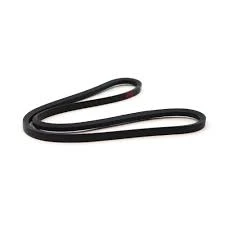- Arabic
- French
- Russian
- Spanish
- Portuguese
- Turkish
- Armenian
- English
- Albanian
- Amharic
- Azerbaijani
- Basque
- Belarusian
- Bengali
- Bosnian
- Bulgarian
- Catalan
- Cebuano
- Corsican
- Croatian
- Czech
- Danish
- Dutch
- Afrikaans
- Esperanto
- Estonian
- Finnish
- Frisian
- Galician
- Georgian
- German
- Greek
- Gujarati
- Haitian Creole
- hausa
- hawaiian
- Hebrew
- Hindi
- Miao
- Hungarian
- Icelandic
- igbo
- Indonesian
- irish
- Italian
- Japanese
- Javanese
- Kannada
- kazakh
- Khmer
- Rwandese
- Korean
- Kurdish
- Kyrgyz
- Lao
- Latin
- Latvian
- Lithuanian
- Luxembourgish
- Macedonian
- Malgashi
- Malay
- Malayalam
- Maltese
- Maori
- Marathi
- Mongolian
- Myanmar
- Nepali
- Norwegian
- Norwegian
- Occitan
- Pashto
- Persian
- Polish
- Punjabi
- Romanian
- Samoan
- Scottish Gaelic
- Serbian
- Sesotho
- Shona
- Sindhi
- Sinhala
- Slovak
- Slovenian
- Somali
- Sundanese
- Swahili
- Swedish
- Tagalog
- Tajik
- Tamil
- Tatar
- Telugu
- Thai
- Turkmen
- Ukrainian
- Urdu
- Uighur
- Uzbek
- Vietnamese
- Welsh
- Bantu
- Yiddish
- Yoruba
- Zulu
loka . 07, 2024 02:41 Back to list
auto timing belt
Understanding Auto Timing Belts Importance and Maintenance
The timing belt is a crucial component of an automobile's engine, playing a vital role in the overall functioning and performance of the vehicle. Understanding its purpose, maintenance, and replacement is essential for any car owner.
What is a Timing Belt?
A timing belt is a dense rubber belt that connects the crankshaft to the camshaft in an engine. This connection synchronizes the rotation of these two critical components, ensuring that the engine’s valves open and close at the proper times during each cylinder’s intake and exhaust strokes. In essence, the timing belt maintains the precise timing necessary for optimal engine performance.
Most modern vehicles are equipped with a timing belt, while some older models may use a timing chain. Although timing chains often last longer than belts, they can be heavier and noisier. Timing belts, on the other hand, are quieter and lighter but require regular maintenance and timely replacement to avoid catastrophic engine damage.
Importance of Timing Belt Maintenance
Proper maintenance of the timing belt is essential for the longevity and reliability of your vehicle’s engine. Over time, the timing belt can wear down due to exposure to heat, oil, and abrasive materials. A worn or broken timing belt can lead to severe engine problems, including bent valves, damaged pistons, and complete engine failure.
Most manufacturers recommend replacing the timing belt every 60,000 to 100,000 miles, but this can vary depending on the vehicle make and model. It's crucial to consult your owner’s manual or a trusted mechanic to determine the specific maintenance schedule for your car.
Signs of a Worn Timing Belt
Recognizing the signs of a failing timing belt can prevent costly repairs. Here are some common indicators that your timing belt might need replacing
auto timing belt

1. Engine Misfires If the timing of the engine’s valves is off, it can lead to misfires or rough idling.
2. Unusual Noises A failing timing belt may produce a high-pitched squeaking or whining noise, indicating that the belt is worn or has become loose.
3. Oil Leaks If you notice oil leakage at the front of the motor, it may signify that the timing belt seals have failed.
4. Check Engine Light If the check engine light illuminates, it may be a sign of timing belt issues among other engine concerns.
5. Visible Damage If you can access the timing belt, check for cracks, fraying, or excessive wear. Any visible signs of damage warrant immediate replacement.
Replacing Your Timing Belt
When the time comes to replace your timing belt, it’s vital to have it done by a skilled mechanic. The replacement involves significant disassembly of the engine, and improper installation can lead to further damage.
During the replacement process, it’s also recommended to replace other related components, such as the water pump, tensioner, and idler pulleys, as they are often in the same area and have a similar lifespan. This proactive approach can save you time and money in the long run.
Conclusion
In conclusion, the timing belt is an essential part of your vehicle’s engine, and its maintenance cannot be overlooked. Regular inspections and timely replacements are crucial to ensuring your vehicle runs smoothly and efficiently. By staying informed and proactive about the condition of your timing belt, you can extend the life of your vehicle and avoid expensive repairs down the road. Always consult your vehicle's manual and a professional mechanic to stay on top of your car's maintenance needs. Remember, a well-maintained timing belt contributes significantly to the overall health of your engine and the performance of your vehicle.
-
Korean Auto Parts Timing Belt 24312-37500 For Hyundai/Kia
NewsMar.07,2025
-
7PK2300 90916-T2024 RIBBED BELT POLY V BELT PK BELT
NewsMar.07,2025
-
Chinese Auto Belt Factory 310-2M-22 For BMW/Mercedes-Benz
NewsMar.07,2025
-
Chinese Auto Belt Factory 310-2M-22 For BMW/Mercedes-Benz
NewsMar.07,2025
-
90916-02660 PK Belt 6PK1680 For Toyota
NewsMar.07,2025
-
drive belt serpentine belt
NewsMar.07,2025

